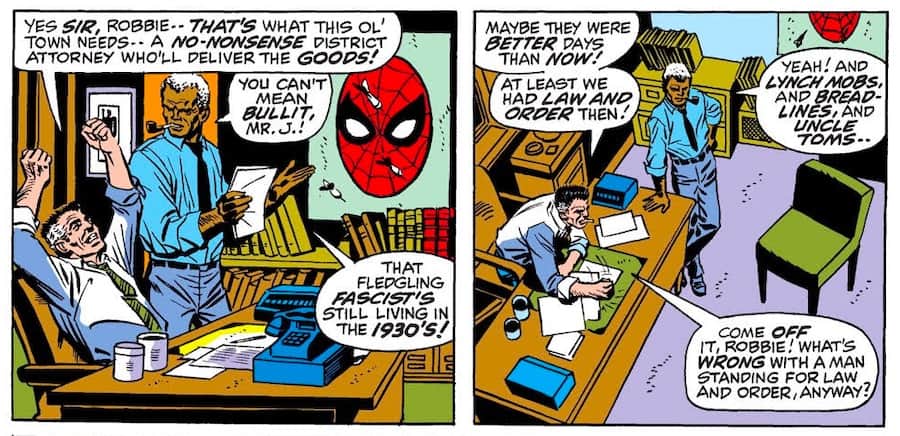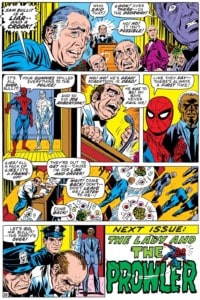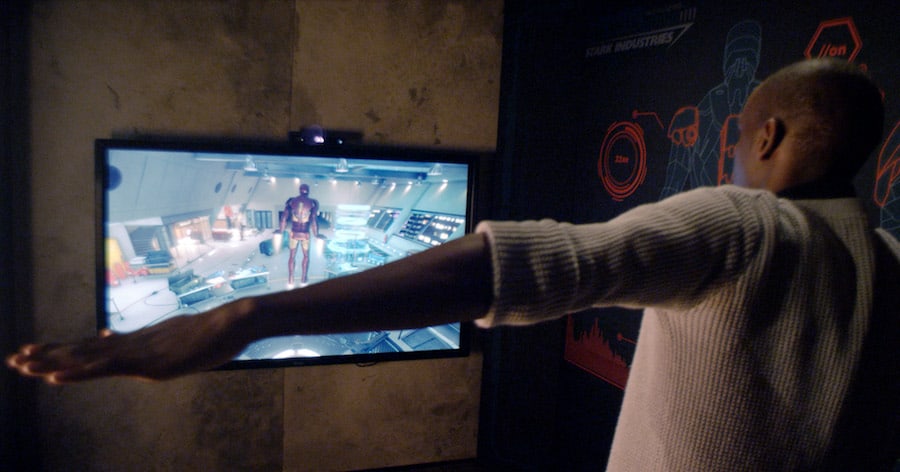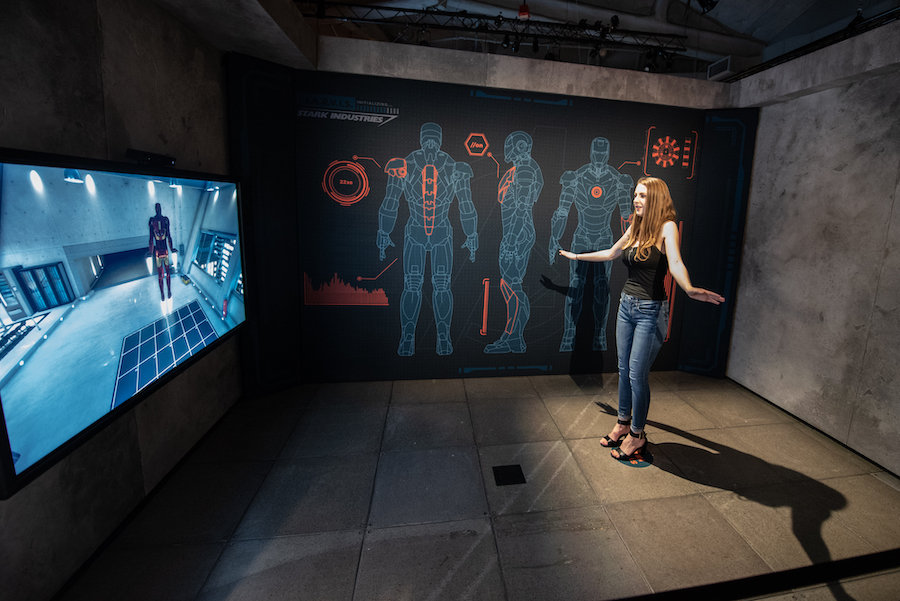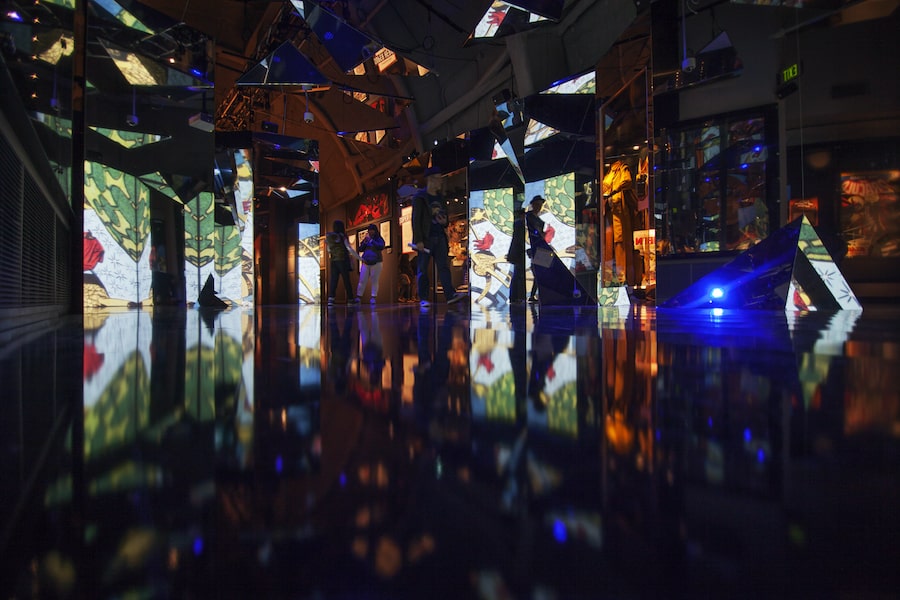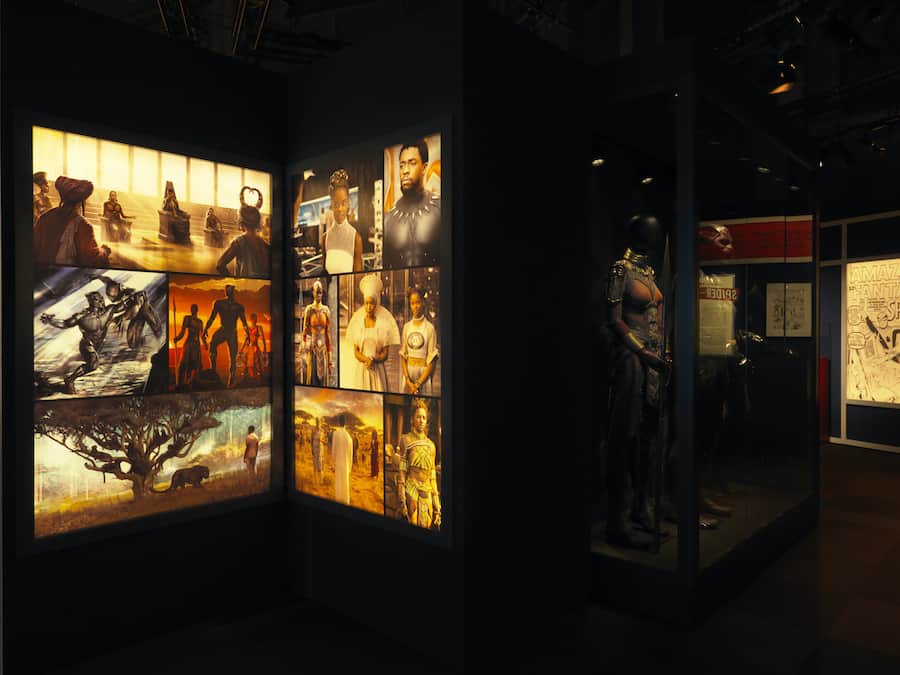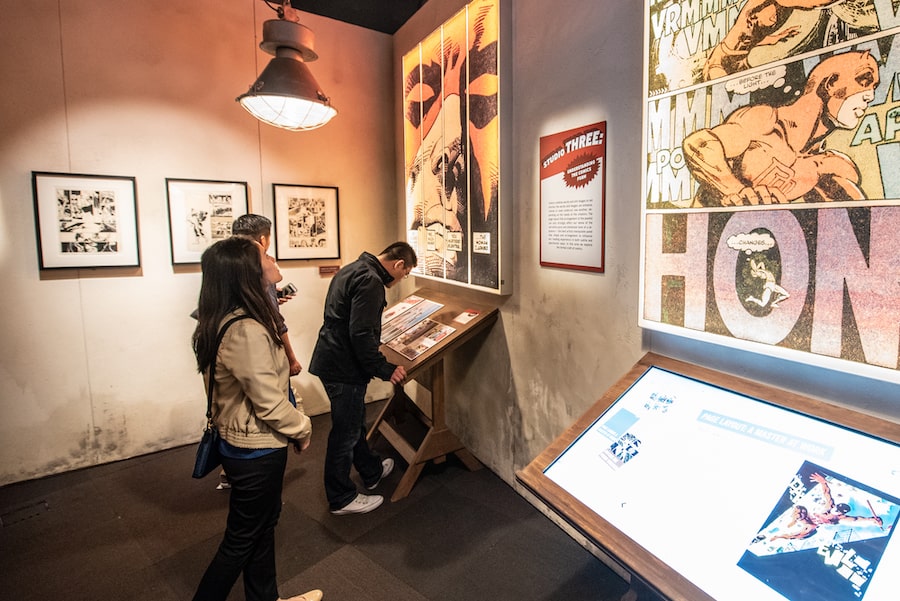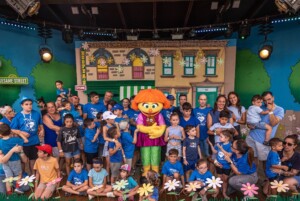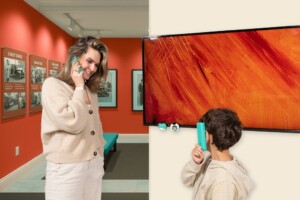This week, an engaging new exhibition exploring the world of Marvel has opened to the public at Chicago’s Museum of Science and Industry (MSI). Marvel: Universe of Super Heroes celebrates the history of the much-loved comics and as well as the popular films and TV shows.
Through a wide range of artefacts, such as original drawings, in-depth displays, costumes, props and more, visitors can learn about the origins and evolution of their favourite characters, including Spider-Man, Black Panther and Captain Marvel.
Blooloop spoke to the exhibition’s Chief Curator, Professor Ben Saunders, and Seth! Leary, Project Manager at SC Exhibitions, to find out more about the show, and the challenges the team faced in working through the global pandemic.
Marvel’s enduring appeal
Marvel published its first comic book in 1939 and its characters are now household names around the world. As well as the comics, a host of TV shows and blockbuster films have attracted new generations of fans.
To begin to explain the enduring appeal of the Marvel Universe, Saunders highlights a storyline from The Amazing Spider-Man issue #92, published in 1971:
“The villain here is not in a costume. It’s a person called Sam Bullit, who is running for Attorney General in New York. He’s campaigning on a law and order campaign. But it’s essentially a racist campaign, and they make sure you understand this. One of the most prominent black characters in the Marvel Universe, Robbie Robertson, investigates. He finds out that Bullit is backed by hate groups.”
“Bullit then has Robbie kidnapped to try and bury the story,” continues Saunders. “Ultimately, Spider-Man and The Iceman team up to rescue Robbie and allow the truth to come out and take down the racist thugs. In the final pages, Bullit is at a dinner for high-end donors and is exposed as a racist and a kidnapper. There is this amazing final shot where all these people walk away and Bullit is arrested.
“I’m blown away whenever I go back and look at that story.”
Recognisable characters
“One of the things that I find throughout the history of Marvel Comics is this attempt to find America’s best version of itself,” says Saunders. “All progress begins in somebody’s imagination. All ideas that things could be better start with just somebody thinking things could be better. And this story is so brave. Especially in the context of the tremendously momentous times in 20th-century history when it was published.
“These comics, which were still marketed at this time primarily as a form of children’s literature, are taking an incredibly brave stance in their willingness to take a strong stand against racism.
Leary agrees, saying:
“The stories aren’t just superficial. The characters are, in some respects, kind of realistic. One of the things that Marvel has done well is to make their characters recognisable. I think that is one of the reasons they appeal to people.
“They don’t create the works in a vacuum. As creators, they are pretty dialled-in to what’s happening in contemporary culture. On one hand, it’s abstracted and it’s super-human, but they have also managed to keep it relevant to people’s lives.”
Original art on show
Moving onto the exhibition itself, the goal was to represent Marvel’s more than 80 years of history in an accessible way. It is designed to cater to both the casual visitor and the Marvel fan. One of the highlights of Marvel: Universe of Super Heroes is the fact that it includes original artworks, as Leary explains:
“The story of the company and the characters are told through, primarily, original works of art. So the visitor can see comic art going back to the beginning of Marvel Comics in 1939.
“This is interspersed with costumes and props from the Marvel Cinematic Universe films and shows, provided by Marvel Studios. And those are a good connection point for a lot of visitors who aren’t comic book geeks. I’m sure a lot of people have never picked up a comic book. But everybody knows something about a Marvel character. Everyone’s heard of Spider-Man. Plus a lot of people have seen the movies.”
“There are about 80 works of original art in the show,” says Leary. “They allow visitors to come face to face with original comic book art and see how it’s done and see where the characters came from.”
“We also commissioned some new art, getting some contemporary artists to create work for us,” says Saunders.
80 years of Marvel history
As well as showing original art and movie props, Marvel: Universe of Super Heroes also takes a closer look behind the scenes of the Marvel world.
“We wanted people to not only have an opportunity to interact with or take pictures with cool stuff from their favourite characters but also to get a chronological sweep and learn the story of how this small underdog publishing company ends up becoming this transmedia global machine,” says Saunders.
“That was the challenge, how to show that movement from the page to the screen, whether it’s video games, television, animation or cinema, and also show how the movement works in the other direction, those transmedia feedback loops.
“For the people who want to do a deep dive, we created these moments that punctuate the show that allow them to do that. At the same time, we wanted a 45-minute walkthrough version for people who were there with their families or who are more casual fans.
“Striking that balance between the interests of the casual fan, who maybe doesn’t even know how much they want to know and how excited they could get, and the people who know everything that you’re going to tell them and will spot every mistake you’ve made…That was the challenge and I honestly think we pulled it off.
“The show is one of the best cases out there right now for the enduring cultural value, aesthetically and politically, of Marvel Comics and what Marvel has been doing for 80 years.”
Adding layers to the narrative
In addition to the artwork and costumes, the exhibition also uses some different technologies and interactives. These help to create an immersive experience and to bring the stories to life.
“We have several touchscreens that allow people to dig deeper,” says Leary. “With touchscreens, you can put in a lot of layers. So, for example, there’s one that explains the process of creating a comic book, from the scriptwriter to the illustrator etc. There’s one where people can drag and drop scenes into a comic book page layout.”
“If you decide, for instance, that you want to get into the story of the actual real-world creation of the Black Panther, rather than just his origin, you can at the touch of a screen get those narratives,” adds Saunders. “That’s there for the more scholarly enthusiast.”
“But then we also have things like the Iron Man interactive which everybody loves. You see kids lining up for this, but actually, everybody wants to do it.
“You can stand in front of a screen essentially and you’re in Tony Stark’s laboratory. As you move, the Iron Man figure moves, and you get to experiment with flying across the lab. Basically, you stand on a spot and move, and you can move your avatar around the screen.”
An immersive experience
To create atmosphere and immerse visitors into the Marvel world, Marvel: Universe of Super Heroes also includes a specially created soundscape.
“It’s a big part of the show, and it’s really unique,” says Leary. “There is a very carefully crafted score that goes with the show.
“It is not the same piece of music playing throughout the whole thing. For instance, when you get into the Doctor Strange gallery, it has its own soundscape that plays in that area. And it adds another level to the experience. Aesthetically, it’s a really important element to the show.”
Projection mapping
Speaking of the Doctor Strange gallery, Saunders says:
“It’s probably my favourite, in terms of an all-around immersive experience. The sequences in the movie were like Inception, where the buildings kind of fold. So we recreate that, but using imagery from the comics, with mirrors and projectors. The mirrors are all at angles, so when you project on them, the projections have this prismatic quality. Then some of the mirrors are not mirrors, they are glass, with the costumes from the show behind them.
“You are in this vast mirrored space and the music changes when you walk into this area. It becomes a little more spectral.”
“Steve Ditko, who is the original Dr Strange artist, did these wildly expressionistic multi-dimensional illustrations of different dimensions. The design team took individual elements out of these panels. They blew these up and animated them, and then projected the animations onto the mirrors. So you have animated Steve Ditko art moving around in this space as you move through it. It’s thrilling, but in the end, it’s quite simple, a trick of mirrors and projections.”
“I could spend a lot of time in there. It’s pretty trippy, between the mirrors and the projections and the animations,” says Leary. “It’s an impactful experience. When you stand in the centre of it you’re almost completely immersed.”
Marvel: Universe of Super Heroes presents a cohesive narrative
The Marvel Universe is a complex one, with overlapping stories involving many different characters. One of the challenges the team faced was to bring all of the different iterations across various media into one collective narrative.
“It’s almost like there are three or four tracks that run through the show in any given room,” says Saunders. “So, there’s a surface track, which starts in the 1930s. I commend Marvel for allowing me to do this, because I didn’t want to treat the beginning of the show as if Marvel comes out of the head of Zeus, so to speak, with no larger cultural context.”
“I wanted to have a first wall where we talked about the birth of the superhero more generally and look at where this fascinating pop-cultural fantasy comes from.
“We start at the very beginning, the birth of the superhero. Then we talk about some of the key creators at Marvel and what they did with these ideas and concepts.
“And then along the way, I was trying to think in terms of character. When you introduce a character, you can show people how they appeared initially and then you can show them a more contemporary iteration. This means you can see how these characters have changed over an extended period as well.”
Transmedia storytelling
“So there’s a linear history of the company chronology, and then there are many chronologies within each gallery involving each character,” continues Saunders. “And that’s how I was able to then be transmedia about it.
“When you introduce Spider-Man, for example, we also look at Marvel’s first attempt to move from comics to other forms of media, these animated cartoons from the mid-1960s, from which we have, amongst other things, the classic Spider-Man cartoon with that tune that everybody knows.
“Besides the original art, besides the costumes, besides the media tables allowing people to do that deep dive into character, there is also the title sequence from that cartoon.”
“You can see, in the one gallery, something like 50 years’ worth of different iterations of Spider-Man. We bring that right up to Miles Morales and Into the Spider-Verse, which is a ground-breaking example of what animation can be. And because Miles can blend in with the background like some camouflage spiders can do, we have him as a projection fading in and out as he appears and disappears on the wall that he’s on.
“Essentially, it’s one big chronological arc. But within this, there are these miniature chronologies which allow us to show how these characters are repeated in different ways and places.”
The people behind the comics
Within this narrative, Marvel: Universe of Super Heroes also includes some of the real-life stories of the creators behind the comics.
“The show opens with comic number one. But it also opens with sort of vignette of a studio, an abstracted idea of a studio,” says Leary. “The idea is to convey the kind of space where Stan Lee, Jack Kirby and Steve Ditko were inventing the whole idea of the superhero.
“The curators were very intentional about locating art that tells the stories of a lot of different kinds of characters, but also a lot of different artists and creatives. The visual artists, the storytellers, the people who write the scripts, they are integral to Marvel’s success.”
Generous lenders
“These fantasies that get into people’s imaginative life, they begin as works on paper,” says Saunders. “There’s something humble and magnificent about that, the fact that these globally recognisable icons, intellectual property worth billions of dollars, begin with an artist, with a pencil.
“The first time I saw a significant piece of original art by Steve Ditko, the original Spider-Man artist, I teared up. That took me by surprise. The original art is not only one of the most important things in the show, it’s one of the things that makes the show unique.
“There have been Marvel exhibitions before, with costumes and props from the movies, and interactives and so on. But Marvel’s policy for many years has been to return the art to the artists. And the artists then sell that, often for a secondary profit.”
“Very few institutions in the United States ever thought to collect it. This means that these pieces of pop-cultural history, these key moments in the history of these characters, are all in private hands with individual collectors.
“We’ve been blessed with some extraordinarily generous lenders who have been willing to do this. It’s a significant group of collectors who, between them, have managed to preserve these pieces of pop culture, and who are willing to lend them. That’s something that no prior Marvel exhibition has been able to do.”
Diversity in the Marvel universe
Returning to the idea of the enduring appeal of the comics and characters, the exhibition also highlights the diversity of the Marvel Universe.
“One of the things about the superhero fantasy is that it is a fantasy about bodies that can do miraculous things,” says Saunders. “And because it is a fantasy about miraculous bodies, it means that body doesn’t have to be a white male body. It can be anybody’s body.”
“For a long time, pop-cultural fantasies just didn’t think in particularly inclusive ways. But Marvel’s been leaning into these issues.
“We were able to show a lot of iterations of a character in one space. So we have Spider-Woman and Miles Morales in the same gallery as Spider-Man. Stan Lee and Jack Kirby introduced the Black Panther as the first black superhero in the Marvel Universe in 1966. Really, it was easy to make sure that we’re seeing women and people of colour, as well as the white guys, in every room.”
Putting on an exhibition in the COVID-19 era
Despite the challenges thrown at the team by the global pandemic, Marvel: Universe of Super Heroes is now open at MSI. Already, the reception by early visitors has been very positive.
MSI is safeguarding visitors and staff by implementing advance, timed-entry tickets to keep a cap on visitor numbers. Plus, it is asking that visitors wear a face covering. Cleaning routines are also being undertaken regularly. In terms of the exhibition itself, little has changed, says Leary:
“This is the second venue now since the pandemic started. And both museums have opted to keep the touchscreens in. At MSI, they’re giving all the visitors a stylus to use on touchscreens. That means they don’t have to put their fingers on them.”

“The other things that people get to interact with are some sculptures. Here, people can take their picture with Spider-Man, with Black Panther, with the Thing, with Hulk. And those surfaces are wiped down periodically because people do want to touch these characters.”
Digital premiere
The opening event for the exhibition also moved to the virtual space:
“We’re learning about new opportunities that we didn’t realise we had before,” says Leary. “In a normal, pre-COVID environment, the host venue would typically hold an opening event. For instance, for donors and members to attend, and the people who loaned the artwork. But now, since we didn’t have the opportunity to do that, we created a virtual opening. It does mean that a lot of people who wouldn’t have been able to come can now participate.”
For the first time, SC Exhibitions is also staging a digital premiere for a professional audience, live from the MSI. This will cater to the museums, science centres, cultural venues and promoters that would normally visit the exhibition in person. The event will allow them an opportunity to discuss the next host venues for this touring exhibition.
“I think a lot of organisations like ours might now say, maybe we should have something like that even when we can do a live event,” says Leary. “Everybody’s tapping into how we can better utilise the technology that is available now.”
Marvel: Universe of Heroes to continue touring
Following its run at MSI, Marvel: Universe of Super Heroes will be heading to the Center of Science and Industry (COSI) in Columbus, Ohio this autumn.
“COSI is a big, beautiful science centre,” says Leary. “The exhibition opens there the day after Thanksgiving 2021 and will be open until late summer 2022.
“Fall 2022 is our next opening. Right now we’re talking to several venues here in the United States and Canada. I think it will stay here in North America for at least one more city. We’ll also take it overseas; we’re looking at European markets and Asian markets.”
Images are from the exhibition’s run at MoPOP in Seattle. Top image © Sandro Vannini


